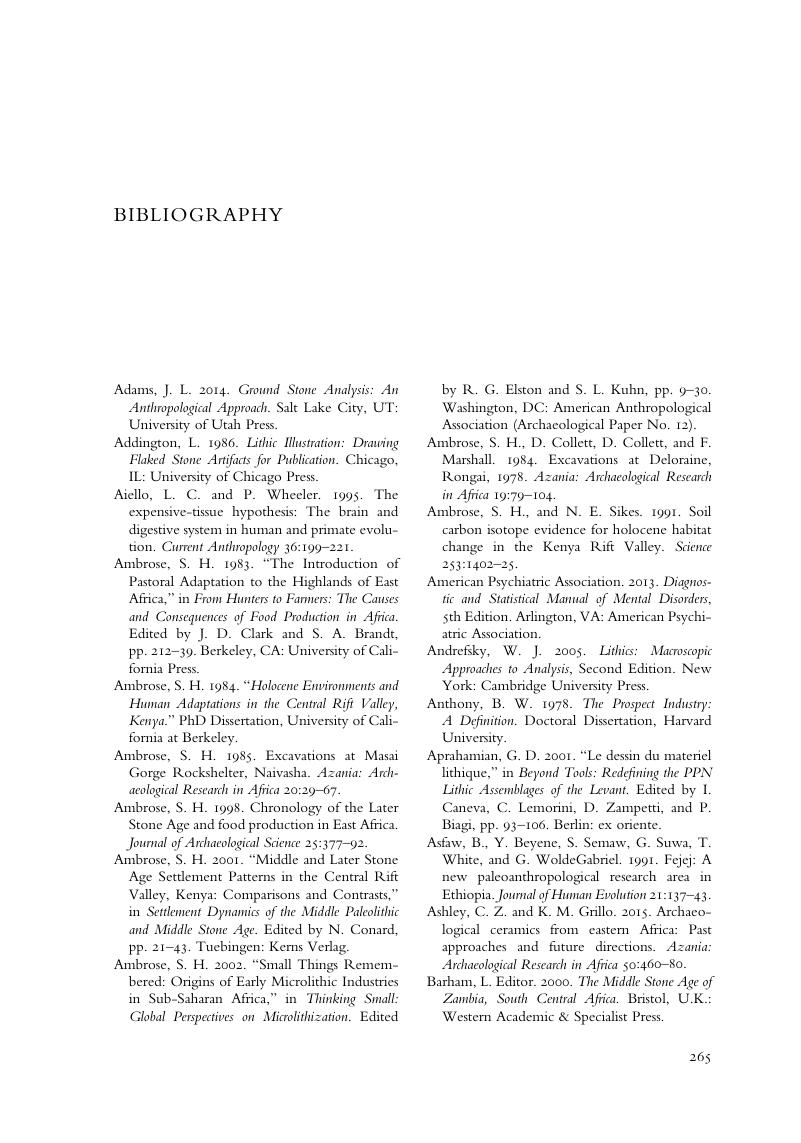Book contents
- Prehistoric Stone Tools of Eastern Africa
- Prehistoric Stone Tools of Eastern Africa
- Copyright page
- Dedication
- Contents
- Figures
- Tables
- Boxes
- Preface
- Acknowledgments
- Chapter 1 Introduction
- Chapter 2 Stone Tools
- Chapter 3 How to Read Stone Tools
- Chapter 4 Eastern Africa
- Chapter 5 The Eastern African Lithic Record
- Chapter 6 Cores and Core-Tools
- Chapter 7 Flakes/Detached Pieces
- Chapter 8 Retouched Pieces
- Chapter 9 Percussors and Groundstone Artifacts
- Chapter 10 Conclusion
- Book part
- Glossary
- Suggested Readings
- Bibliography
- Index
- References
Bibliography
Published online by Cambridge University Press: 27 March 2020
- Prehistoric Stone Tools of Eastern Africa
- Prehistoric Stone Tools of Eastern Africa
- Copyright page
- Dedication
- Contents
- Figures
- Tables
- Boxes
- Preface
- Acknowledgments
- Chapter 1 Introduction
- Chapter 2 Stone Tools
- Chapter 3 How to Read Stone Tools
- Chapter 4 Eastern Africa
- Chapter 5 The Eastern African Lithic Record
- Chapter 6 Cores and Core-Tools
- Chapter 7 Flakes/Detached Pieces
- Chapter 8 Retouched Pieces
- Chapter 9 Percussors and Groundstone Artifacts
- Chapter 10 Conclusion
- Book part
- Glossary
- Suggested Readings
- Bibliography
- Index
- References
Summary

- Type
- Chapter
- Information
- Prehistoric Stone Tools of Eastern AfricaA Guide, pp. 265 - 283Publisher: Cambridge University PressPrint publication year: 2020

